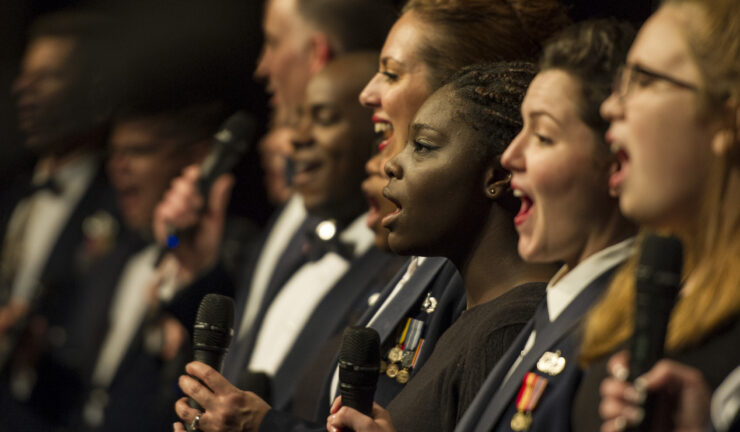Propeller dance integrated community members for Ottawa show
For two nights starting on Oct. 25, the Propeller Dance troupe, alongside other Ottawa community members, took to the Ottawa Art Gallery’s floor and presented two works—PICTURE THIS and Spasticus.
PICTURE THIS was accompanied with live music by University of Ottawa adjunct professor, Jesse Stewart, and featured an integrated professional dance troupe and outside members of the Ottawa community.
“PICTURE THIS is a piece that (doubles as) a community art project—involving The Royal, and the psychiatric survivors of Ottawa,”explained co-artistic director of Propeller dance, Shara Weaver. “(Spasticus) is looking at the societal obstacles and barriers faced by people with disabilities.”
Both performances featured dancers with varying levels of physical and mental ability, whose actions contributed to a holistic narrative. “Audiences get to see wheelchair tilts, and movement on the floor—they get to hear stories of lived experience with disability,” said Weaver.
To convey that lived experience, PICTURE THIS also incorporated other forms of art alongside their dance performance—including music, and artistic submissions from the cast.
In one instance, the dance troupe projected one of the performer’s paintings as the backdrop to a scene to provide context for another performer’s monologue. The painting depicted a hospital room, which added another form of visualization for the institutionalized struggles that people with disabilities face.
However, the two presentations were not only designed to impress audiences. For Liz Winkelaar, the director of Spasticus, the second dance performance was meant to convey a message.
“The message is solidarity,” said Winkelaar. “It’s basically a historical piece about the disability rights movement, but it resonates with us (because) to us, it’s still current. So, in that sense, it’s an ongoing struggle for equality … (and) the piece represents that.”
Indeed, the title of Spasticus stems from a song by Ian Dury that, despite controversy when it was originally released, is a play-on-words that compares people with disabilities to Spartacus—a gladiator who fought back against the Roman regime, and has been committed to martyrdom.
Consequently, the song resonated with Windelaar, and served as inspiration for the performance. “It was so rebellious, that it appealed to me,” she told the Fulcrum. “As I researched it, I realized that lots of people with disabilities claimed that song.”
Winkelaar told the Fulcrum that she believes that there is a lack of awareness about the history of institutionalized oppression against people with disabilities, which is partly what Spasticus was meant to address.
“I studied disability studies, so I have the context,” said Winkelaar. “For instance, we were still sterilizing people in the 1970s without telling them … so, these kinds of things happened up until (recently), and I don’t think that people know, really.”
“It’s a dance piece placed in the context of history of oppression and liberation of disabilities,” said Winkelaar. “(We wanted) to show what happened in history.”
To find out more about other works by Propeller Dance, and their upcoming events, check out their website.






